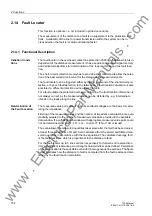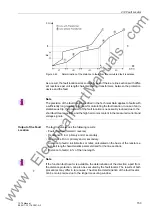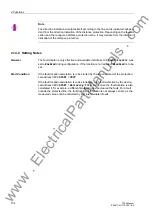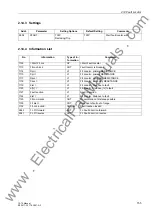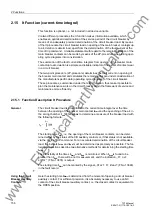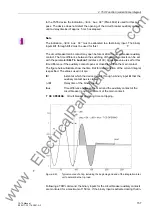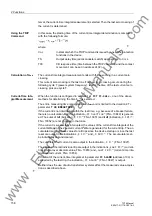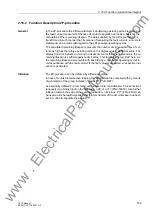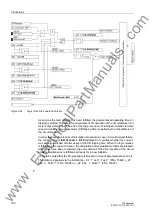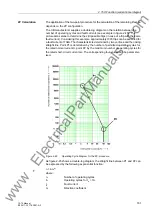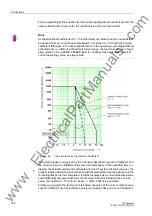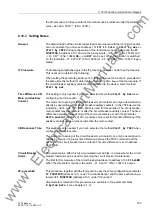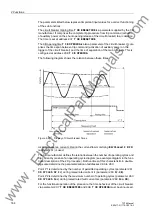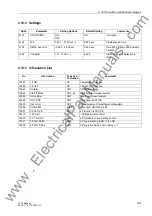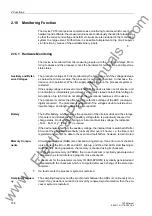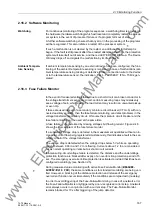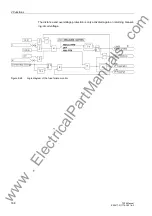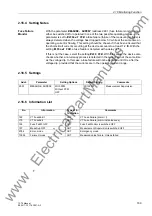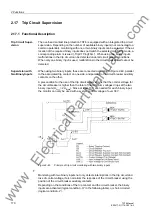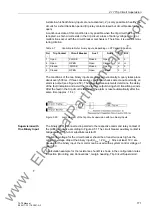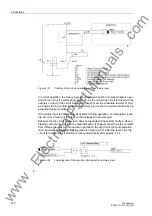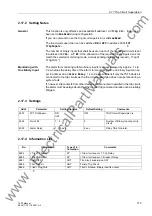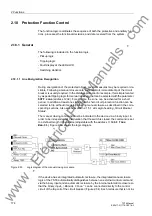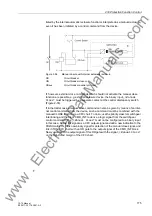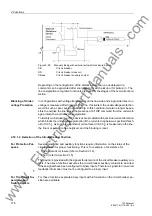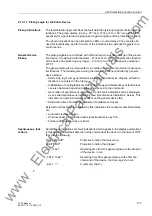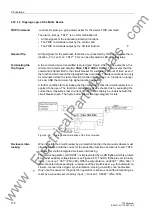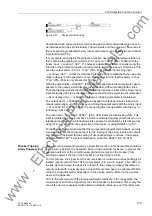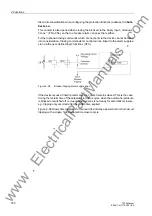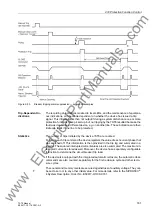
2 Functions
166
7ST6 Manual
E50417-G1176-C251-A3
2.16
Monitoring Function
The device 7ST6 incorporates comprehensive monitoring functions which cover both
hardware and software; the measured values are continuously checked for plausibility,
so that the current and voltage transformer circuits are also included in the monitoring
system to a large extent. Furthermore it is possible to implement a trip circuit supervi-
sion function by means of the available binary inputs.
2.16.1 Hardware Monitoring
The device is monitored from the measuring inputs up to the command relays. Moni-
toring features and the processor check the hardware for malfunctions and impermis-
sible states.
Auxiliary and Refer-
ence Voltages
The processor voltage of 5 V is monitored by the hardware, and if the voltage decreas-
es below the minimum value, the processor is no longer operative. In that case, the
device is not operational. When the supply voltage returns, the processor system is
restarted.
If the supply voltage is removed or switched off, the device is taken out of service, and
an indication is immediately generated by a normally closed contact. Brief voltage in-
terruptions of up to 50 ms do not disturb the operational readiness of the device.
The processor monitors the offset and the reference voltage of the ADC (analog-to-
digital converter). The protection is suspended if the voltages deviate outside an al-
lowable range, and lengthy deviations are reported.
Battery
The buffer battery, which ensures the operation of the internal clock and the storage
of counters and indications if the auxiliary voltage fails, is periodically checked for
charge status. On its undershooting a minimum admissible voltage, the indication
„Fail Battery“
(FNo. 177) is issued.
If the device is isolated from the auxiliary voltage, the internal clock is switched off after
6 hours at the earliest automatically (normally after over 24 hours), i.e. the time is not
registered any more. The data in the event and fault buffers, however, remain stored.
Memory Compo-
nents
All working memories (RAMs) are checked during start-up. If an error occurs, the start-
up is aborted, the Error LED and LED 1 light up, and the other LEDs start flashing si-
multaneously. During operation, the memory is checked using its checksum.
For the program memory (EPROM), the cross-checksum is cyclically generated and
compared to a stored reference program cross-checksum.
A checksum for the parameter memory (FLASH-EPROM) is cyclically generated and
compared with the checksum which is computed after each change of the stored pa-
rameters.
If a fault occurs the processor system is restarted.
Sampling Frequen-
cy
The sampling frequency and the synchronism between the ADCs is continuously mon-
itored. If any deviations cannot be removed by renewed synchronization, then the pro-
cessor system is restarted.
www
. ElectricalPartManuals
. com

